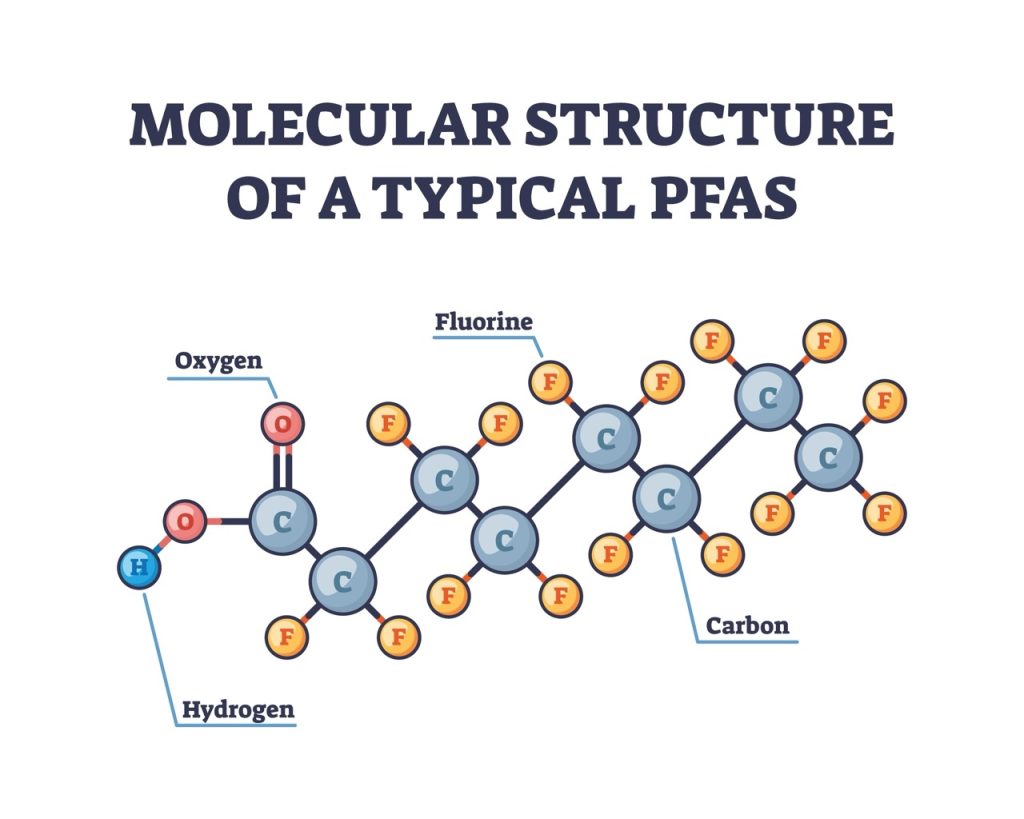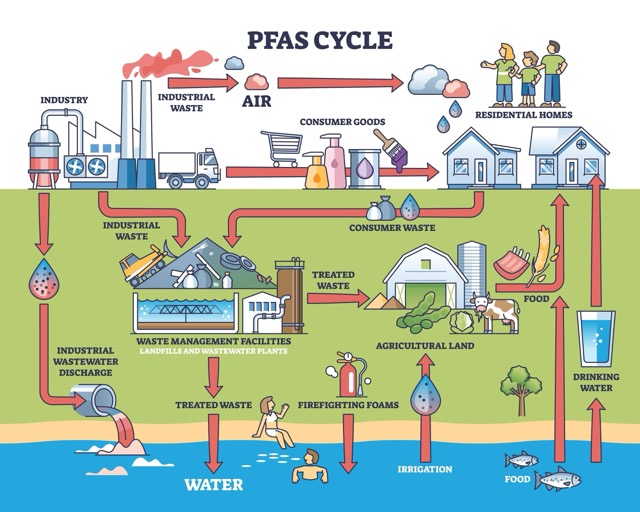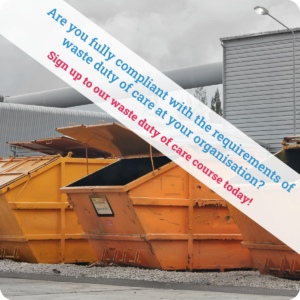
With the recent ban on the use of firefighting foams containing PFOA and the overarching phase-out measures coming over the next few years, we asked our consultants some questions to get our head around what PFAS chemicals are and the legislation covering them.
So, what are PFAS?
PFAS (perfluoroalkyl and polyfluoroalkyl substances) are a group of synthetic chemicals, commonly known as ‘forever chemicals’ as they struggle to break down in the environment, and the body. They have been used for decades in products including:
- cookware,
- cosmetic products,
- textiles,
- pesticides,
- fire-fighting foams, and
- food packaging.
Studies have found these ‘forever chemicals’ in a wide range of natural environments and living things which has created concern due to the harmful nature of PFAS.
PFOA (perfluorooctanoic acid) and PFOS (perfluorooctance sulfonic acid) are two of the most common groups of PFAS chemicals, with PFOA now banned as it is classed as a persistent organic pollutant (POP), and PFOS restricted, with a future ban likely.
What’s the difference between long and short chain PFAS?
You may have seen reference to ‘long chain’ and ‘short chain’ PFAS; this refers to their molecular structure, specifically the number of carbons within the chain.

It was originally thought that short chain PFAS were less harmful to human health than long chain PFAS, so short chain PFAS began to be used more. It has since been found that short chain PFAS are also very persistent in the environment and can be more mobile in water and soil.
What is the impact of PFAS on the environment and human health?
Because of the widespread use and contamination of PFAS in the environment, including drinking water and soil, the impacts of PFAS on the environment and human health have been studied.
Studies on human health have shown links to various health problems such as liver damage, fertility issues, cancers and thyroid disease.
As with health problems in humans, studies have shown impacts on animal health too including potential links to lowering reproduction rates in some species.
Environmental concerns sit with the ability for PFAS chemicals to spread into and contaminate soil, water and air, with potential to impact aquatic ecosystems and change the physical properties of soil, disturbing natural processes.
How do PFAS chemicals actually enter the human body?
PFAS chemicals have found their way into soil, water and air meaning that they reach us through the water we drink, the food we eat, and the air we breathe. As these ‘forever chemicals’ are also used in a lot of domestic products like cosmetics, cleaning products and cookware, we’re also exposed to them through physical contact.
What activities result in the most significant releases of PFAS in the environment?
The diagram below demonstrates the many ways in which PFAS chemicals are released into the environment, with manufacturing sites which use/produce PFAS, waste management facilities, and class B firefighting foams which contain fluorine thought to be the most significant.

What can we do to reduce the amount of PFAS in the environment?
There’s a good few pieces of legislation that restrict, and in some cases ban, the use of PFAS chemicals, but in terms of what we can do either ourselves or at work, we can:
- look at the products we’re buying and make sure they don’t contain PFAS chemicals;
- consider effective filtration systems for water and wastewater treatment to reduce contamination; and
- ensure we’re disposing of used products which contain PFAS in the right way so they can be treated appropriately (products containing POPs shouldn’t be sent to landfill).
What current legislation covers the use of PFAS?
Regulation (EU) 2019/1021 on persistent organic pollutants outlines the legal framework for the EU (including the Republic of Ireland and Northern Ireland), and Assimilated Regulation (EU) 2019/1021 on persistent organic pollutants sets out the legal framework in Great Britain. The Regulations aim to protect the environment and human health by prohibiting, phasing out or restricting the manufacture, placing on the market and use of substances classed as persistent organic pollutants (POPs) in the Stockholm Convention on Persistent Organic Pollutants.
PFOAs are within the ‘eliminate’ list of the Stockholm Convention, meaning we must take measures to eliminate the production and use of PFOAs, while PFOS is ‘restricted’ meaning we must take measures to restrict the production and use of PFOS chemicals.
Regulation (EU) 2019/1021 is implemented in the Republic of Ireland by the European Union (Persistent Organic Pollutants) Regulations 2020.
Assimilated Regulation (EU) 2019/1021 is implemented in the United Kingdom by The Persistent Organic Pollutants Regulations 2007 which places restrictions on the manufacture, sale and use of POPs, and requires waste containing POPs to be managed and processed in a way which minimises contamination.
As of 4th July 2025, PFOA-containing firefighting foams were banned from use as they were added to Annex I of Assimilated Regulation (EU) 2019/1021 (covering Great Britain) back in 2020, with an exemption allowing existing stocks of PFOA-containing firefighting foams to be used until July 2025.
In October 2025, an amendment to Regulation (EC) 1907/2006 concerning the Registration, Evaluation, Authorisation and Restriction of Chemicals (EU REACH covering the EU, Republic of Ireland and Northern Ireland) was published which outlines that PFAS substances are added to Annex XVII (restrictions on the manufacture, placing on the market and use of certain dangerous substances, mixtures and articles), and that firefighting foams containing PFAS cannot be placed on the market or used from 23rd October 2030 (some exceptions apply).
What about future legislation covering PFAS?
In terms of potential future legislation, the Health and Safety Executive (HSE) are currently consulting on banning all PFAS chemicals used in firefighting foams as has been implemented in the EU. The consultation closes on 18th February 2026 so we can expect to see some changes over the next few years to the use of PFAS in equipment like foam fire extinguishers (for class B fires) and fixed fire suppression systems.
In June 2025, the Department for Environment, Food & Rural Affairs (Defra) published a policy paper ‘Interim approach to the PMT* concept to support UK REACH risk management of PFAS’ which applies to Great Britain. Some PFAS chemicals do not meet the currently defined criteria of PBT (persistent, bioaccumulative and toxic) or vPvB (very persistent and very bioaccumulative), which is why there’s a need for the persistent, mobile and toxic (PMT) concept to be further developed in Great Britain so these chemicals can be regulated more clearly. The policy paper aims to provide guidance for future legislation on managing the risks associated with PFAS chemicals.

